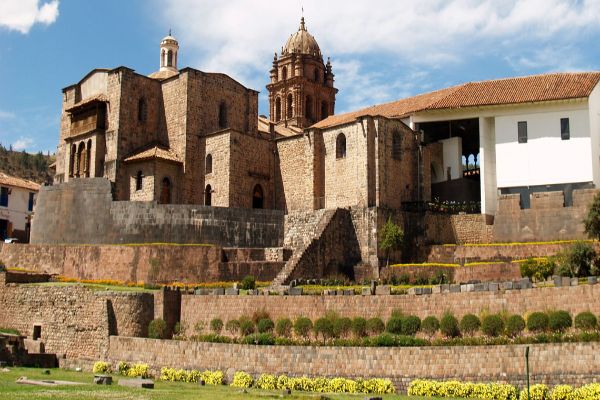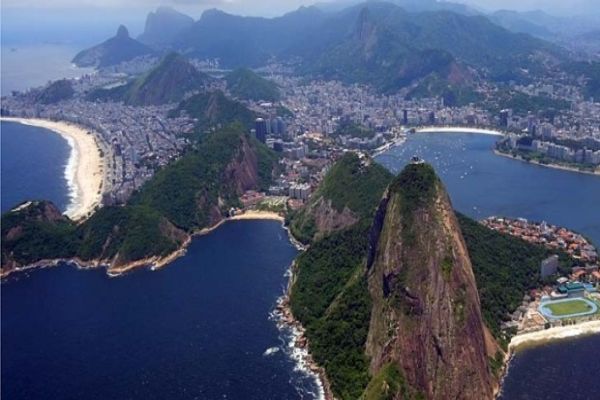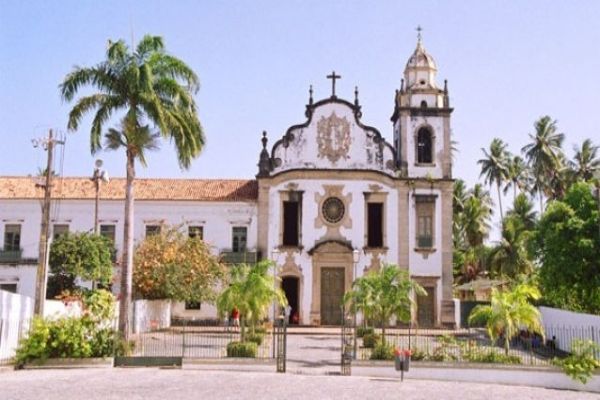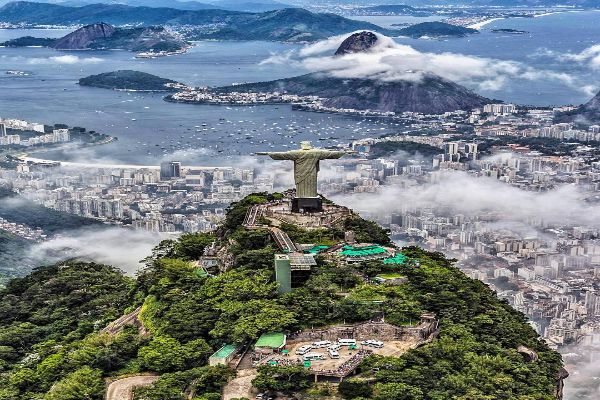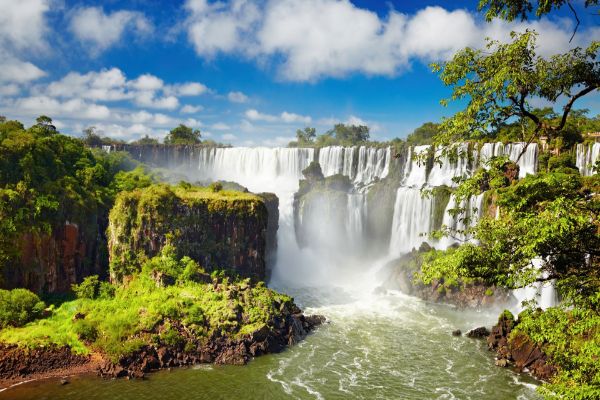Brazil. Visit and love us
Brazil, officially Federative Republic of Brazil, Portuguese República Federativa do Brasil, country of South America that occupies half the continent’s landmass. It is the fifth largest country in the world, exceeded in size only by Russia, Canada, China, and the United States, though its area is greater than that of the 48 conterminous U.S. states. Brazil faces the Atlantic Ocean along 4,600 miles (7,400 km) of coastline and shares more than 9,750 miles (15,700 km) of inland borders with every South American country except Chile and Ecuador—specifically, Uruguay to the south; Argentina, Paraguay, and Bolivia to the southwest; Peru to the west; Colombia to the northwest; and Venezuela, Guyana, Suriname, and French Guiana to the north.
Brazil stretches roughly 2,700 miles (4,350 km) from north to south and from east to west to form a vast irregular triangle that encompasses a wide range of tropical and subtropical landscapes, including wetlands, savannas, plateaus, and low mountains. Brazil contains most of the Amazon River basin, which has the world’s largest river system and the world’s most-extensive virgin rainforest. The country contains no desert, high-mountain, or arctic environments.
Brazil is the fifth most-populous country on Earth and accounts for one-third of Latin America’s population. Most of the inhabitants of Brazil are concentrated along the eastern seaboard, although its capital, Brasília, is located far inland and increasing numbers of migrants are moving to the interior. Rio de Janeiro, in the eyes of many of the world, continues to be the preeminent icon of Brazil. The nation’s burgeoning cities, huge hydroelectric and industrial complexes, mines, and fertile farmlands make it one of the world’s major economies. However, Brazil struggles with extreme social inequalities, environmental degradation, intermittent financial crises, and a sometimes deadlocked political system.
History of Brazil
Early period
Exploration and initial settlement
Europeans explored the Brazilian coastline only after mapping parts of the Caribbean Sea and the northeastern coast of South America; moreover, intensive exploration of Brazil resulted indirectly from Portugal’s efforts to expand its colonies in Africa and Asia. In 1498 the Portuguese navigator Vasco da Gama discovered an all-water route to the Indies and the Spice Islands via Africa’s Cape of Good Hope. The Portuguese king, hoping to capitalize on this discovery, dispatched an imposing armada to India under Pedro Álvares Cabral, whose sailing directions had been drawn up by da Gama himself. To avoid the calms off the Gulf of Guinea, Cabral bore so far to the west that on April 22, 1500, he sighted the mainland of South America. The Treaty of Tordesillas (1494) between Spain and Portugal had established a line at about longitude 46° 30′ W that divided Spanish (west) and Portuguese (east) claims in the New World. The region sighted by Cabral lay well within the Portuguese zone, and the crown promptly claimed it. Portugal’s new possession was initially called Vera Cruz (“True Cross”), but it was soon renamed Brazil because of the copious amounts of brazilwood (pau-brasil) found there that yielded a valuable red dye.
The tidings of Cabral’s landing aroused great enthusiasm among the Portuguese, and the crown began to sponsor major transatlantic explorations, including that of the Italian navigator Amerigo Vespucci, whose small fleet sailed along the coast of Brazil and for the first time estimated the extent of the land. Vespucci, calendar in hand, baptized different points on the coast with the names of the saints on whose days they were discovered.
Interest in Brazil waned over the subsequent two decades. The Portuguese began a desultory trade with the Indians for brazilwood, but they failed to discover precious metals in Brazil and thus focused their attention on the lucrative trade with Asia. Brazil became a sort of no-man’s-land over which the Portuguese crown wielded only a shadowy control, and European rivals quickly took advantage of that neglect. The French, in particular, trespassed on Portuguese claims in South America and shipped the dyewood to Europe. Portugal’s apathy ended, however, during the reign (1521–57) of John III, who gradually shifted the focus in colonial affairs from Asia to America.
The Portuguese crown made the first systematic effort to establish a government in Brazil in 1533. It divided the colony into 15 hereditary captaincies, or fiefs, each extending 50 leagues—i.e., about 160 miles (260 km)—along the coast and an indefinite distance inland. These grants were distributed to favoured persons, chiefly courtiers, who became known as donatários (“donees”) and wielded extensive rights and privileges; however, only two of the captaincies were ultimately successful: São Vicente (in present São Paulo state) and Pernambuco. The former included the town of São Vicente, the growing port of Santos, and the village of São Paulo on the Serra do Mar’s fertile Piratininga Plateau, all of which had a combined population of about 5,000 by the mid-16th century. The captaincy of Pernambuco developed in northeastern Brazil, centred on the town of Olinda. Its donatário, Duarte Coelho Pereira, converted Pernambuco into a great sugar-producing region, offering the first example of a profitable agrarian export from the New World to Europe.
Royal governors, Jesuits, and slaves
King John III resolved to strengthen his authority in Brazil by unifying the inefficient donatários under a central administration. He appointed as governor-general Tomé de Sousa, a Portuguese noble with impressive experience in Africa and India. Sousa landed in Brazil in 1549 and founded Salvador (Bahia), a capital from which Brazil was governed for 214 years. Sousa also placed local officials over the captaincies and fortified strategic points along the coast. In the cities, he established municipal organizations similar to those in Portugal. Brazil then began to attract settlers in increasing numbers. By 1600 Bahia and Pernambuco each had a population of roughly 2,000 Europeans and more than twice as many African slaves and Indians.
Jesuit brethren provided labour and expertise that were central to the progress of the colony. At the request of John III, Manuel da Nóbrega and several other Jesuits had accompanied Tomé de Sousa to Salvador and became the first of a long line of missionaries devoted to protecting and converting the Indians and raising the moral level of the colonists. As soon as they converted Indians to Christianity, the Jesuits settled them in aldeias (“villages”) that were akin to the missions in Spanish America. Most other Portuguese colonists owned Indian slaves, however, and resented the Jesuits’ control over such a valuable labour supply. A conflict arose between the two groups and reverberated throughout the colony, and both parties appealed to the crown. The Jesuits won a partial victory in a royal decree of 1574 that granted them full control over the Indians in the aldeias while permitting the colonists to enslave Indians captured in “legitimate warfare.” In the Amazon River basin, Father António Vieira became the centre of a somewhat similar conflict in the 17th century, when he established a chain of missions there. Though the missions helped protect Indians from slavery, they greatly contributed to the spread of deadly European diseases. Brazilian colonists, facing a compounding labour shortage in the mid-16th century, imported increasing numbers of African slaves.
Dutch and French incursions
Brazil had hardly been brought under royal Portuguese authority before the French made a determined effort to establish a permanent colony there. In 1555 French troops took possession of the beautiful harbour of Rio de Janeiro, which, inexplicably, the Portuguese had neglected to occupy. A large Portuguese force under Mem de Sá, the governor-general, blockaded the entrance to the harbour, eventually forced the French garrison to surrender, and founded (in 1567) the city of Rio de Janeiro to ward off future attacks.
Portugal was united with Spain from 1580 to 1640, and Brazil was consequently exposed to attacks by Spain’s enemies, including the newly independent Netherlands. The Dutch seized and briefly held Salvador in 1624–25, and in 1630 the Dutch West India Company dispatched a fleet that captured Pernambuco, which remained under Dutch control for a quarter-century. The company chose as governor of its new possession John Maurice, count of Nassau-Siegen, a prince of the house of Orange and perhaps the ablest administrator in the Netherlands. The Dutch also invited distinguished artists and scientists to make known to Europe the resources and beauties of Brazil; however, the profit-driven directors of the company refused to support John Maurice’s enlightened social policies, and he resigned in 1644. João Fernandes Vieira, a wealthy plantation owner, subsequently launched a rebellion that steadily gained ground against John Maurice’s incompetent successors. The Brazilians, acting without Portuguese aid, defeated and expelled the Dutch in 1654, an achievement that helped spark Brazilian nationalistic sentiments.
People of Brazil
Ethnic groups
Brazil has long been a melting pot for a wide range of cultures. From colonial times Portuguese Brazilians have favoured assimilation and tolerance for other peoples, and intermarriage was more acceptable in Brazil than in most other European colonies; however, Brazilian society has never been completely free of ethnic strife and exploitation, and some groups have chosen to remain separate from mainstream social life. Brazilians of mainly European descent account for nearly one-half the population, although people of mixed ethnic backgrounds form an increasingly larger segment; more than two-fifths of the total are mulattoes (mulatos; people of mixed African and European ancestry) and mestizos (mestiços, or caboclos; people of mixed European and Indian ancestry). A small proportion are of entirely African or Afro-Indian ancestry, and peoples of Asian descent account for an even smaller division of the total. Indians are, by far, the smallest of the major ethnic groups; however, as many as one-third of all Brazilians have some Indian ancestors.
Brazilians of African descent (referred to by outside scholars as Afro-Brazilians) can be further characterized as pardos (of mixed ethnicities) or pretos (entirely African); the latter term is usually used to refer to those with the darkest skin colour. Although skin colour is the main basis of the distinction between pardo and preto, this distinction is often subjective and self-attributed. Many Brazilians of colour consider it more advantageous to identify themselves as pardos and therefore do so.
Skin colour and ethnic background influence social interactions in Brazil. Brazilians with darker skin colour account for a disproportionately large number of the country’s poor; nevertheless, racially motivated violence and intolerance are less common in Brazil than in the United States and some parts of Europe. Blatant discrimination is illegal but pervasive, especially in predominantly white middle- and upper-class areas, and racism often takes subtle forms. Interracial marriage does occur; however, the majority of marriages in Brazil are between two people of the same race or colour partly because Brazilians tend to interact primarily with people of their own social class and geographic region—two factors that are closely tied to race in Brazil. Still, although the country may not be a “racial democracy” as some observers have claimed, its social barriers are somewhat flexible and even permeable. Members of the light-skinned majority seldom discriminate against Afro-Brazilians who have achieved high levels of education or socioeconomic status. As a consequence, most Afro-Brazilians pursue social advancement through individual rather than collective actions, such as civil rights movements.
Language of Brazil
Portuguese is the first language of the vast majority of Brazilians, but numerous foreign words have expanded the national lexicon. The Portuguese language has undergone many transformations, both in the mother country and in its former colony, since it was first introduced into Brazil in the 16th century. The two countries have largely standardized their spellings, but pronunciations, vocabularies, and the meanings of words have diverged so widely that it now may be easier for some Brazilians to understand Spanish-language films from other Latin American countries than films from Portugal. Italians, Germans, Japanese, and Spanish-speaking immigrants have introduced new words and expressions in Brazilian Portuguese, such as the ubiquitous expression tchau (“farewell”), which was adopted from the Italian ciao. Foreign products and technologies have introduced additional terms.
Brazil’s indigenous peoples speak dozens of discrete languages, and some authorities suggest that the greatest divergence of the Brazilian language from the Portuguese can be traced to initial contact with the Indians. The Tupian, or Tupí-Guaraní, language group has especially influenced Brazilian place-names and added perhaps thousands of words and expressions to Brazilian Portuguese. Tupian was the principal language of Brazil’s native peoples before European contact, and it became the lingua franca between Indians and Portuguese traders, missionaries, adventurers, and administrators; it was widely used in the Amazon region and western Brazil until the 19th century. The Tupian influence also caused Brazilians to enunciate more clearly and to use more nasal speech patterns than their Iberian counterparts.
Religion
About two-thirds of the Brazilian people adhere to Roman Catholicism, which ceased to be the official religion after the proclamation of the republic in 1889. After independence, which loosed the formerly close links between church and state, the predominance of Catholics among the immigrants of the 19th and 20th centuries contributed to the lasting presence of that religion. Much of the rest of the population is Protestant, including fundamentalist and Pentecostal groups. (Evangelical groups gathered rapid support from the 1990s by taking some members from the Catholic ranks; in response, Catholic groups initiated a series of charismatic masses and rallies.)
Cultural Life of Brazil
The cultures of the indigenous Indians, Africans, and Portuguese have together formed the modern Brazilian way of life. The Portuguese culture is by far the dominant of these influences; from it Brazilians acquired their language, their main religion, and most of their customs. The Indian population is now statistically small, but Tupí-Guaraní, the language of many Brazilian Indians, continues to strongly influence the Brazilian Portuguese language; other Indian contributions to Brazilian culture are most apparent in the Amazon basin.
African influences on the Brazilian way of life are strongest along the coast between the Northeast and Rio de Janeiro; they include traditional foods, religions, and popular music and dance, especially the samba. Commercial and cultural imports from Europe and North America have often competed with—and influenced—Brazilians’ own cultural output, and critics have argued that the nation’s cultural identity is suffering as a result. Despite numerous social and economic challenges, Brazilians continue to be exuberant and creative in their celebrations and art forms.
Cultural institutions
The Brazilian Academy of Letters, with its headquarters in Rio de Janeiro, is generally regarded as the most prestigious of the country’s numerous learned societies. The National Library, also in Rio, was founded in 1810 with 60,000 volumes from the Portuguese royal library; it now holds millions of books and documents. Most of Brazil’s other libraries have limited holdings. Among the major history museums are the Museum of the Republic (1960; housed in the former governmental palace) and the National Historical Museum (1922), both in Rio, the São Paulo University Museum (1895), and the Imperial Museum (1940) in Petropólis.
The São Paulo Art Museum (1947) and Rio de Janeiro Museum of Modern Art (1948) are internationally renowned. Both Rio and São Paulo have major museums of anthropology and numerous theatres. A notable institution for the performing arts is the São Paulo State Symphony Orchestra (1953; revitalized 1972), housed since 1999 in the Sala São Paulo, a renovated early 20th-century railroad station. Few of the country’s major cultural institutions are based in Brasília.
The arts
Literature
Brazil has had many world-renowned literary figures whose cumulative writings are regarded by many to be richer than those of Portugal because of their variety of ethnic and regional themes. Joaquim Machado de Assis, the son of a freed slave, was a leading voice of the 19th century with his romantic novels. In the 20th century the Northeast produced a particularly wide range of superb writing, including that of Gilberto Freyre on the subject of life under slavery, Graciliano Ramos’s tragedies about the drought quadrilateral, João Guimaraês Rosa’s tales of survival and violence in the interior, and Jorge Amado’s lighthearted stories set in the cacao-growing zone of Bahia. Érico Veríssimo’s tales of southern Brazil have also been translated into many languages.
Visual arts
The landscape architect Roberto Burle Marx has made urban Brazilians especially aware of the splendours of their natural environment by replacing the traditional, formal European-style gardens containing imported plants with a profusion of native species in approximation to their natural settings. Some of Marx’s landscapes have been used to set off the imaginative structures of Brazil’s world-renowned architect Oscar Niemeyer.
Among his works, Niemeyer designed a striking array of public buildings in Brasília, in collaboration with Lúcio Costa, the creator of the capital’s original layout. Brazil also cherishes numerous splendid structures from its colonial and imperial past, from the tiled houses and ornate churches of Salvador to the palaces and public buildings of Rio de Janeiro. Among the most revered of these are the 18th-century churches in Minas Gerais that were adorned by facades, biblical scenes, and statues carved in soapstone by Antônio Francisco Lisboa, better known as Aleijadinho (“Little Cripple”).
Attractions & Places to Visit in Brazil
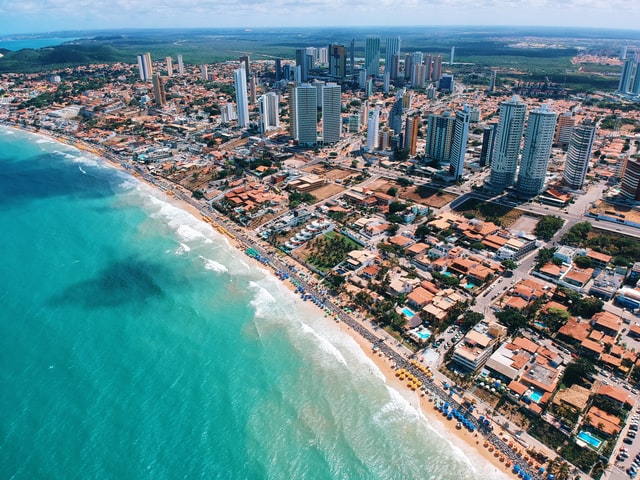
Famous for being home to one of the world’s top football teams, the Rio de Janeiro Carnival and the remarkable Iguazu Falls, Brazil is an exciting world travel destination. As South America’s largest country, Brazil covers a majority of the continent’s northeastern region and borders all of its countries except for Chile and Ecuador.
From the Amazon rainforest in the North to the tropical beaches along the Atlantic, to the Pantanal wetlands and the vibrant metropolises of the Southeast there are plenty of interesting places to visit in Brazil.



